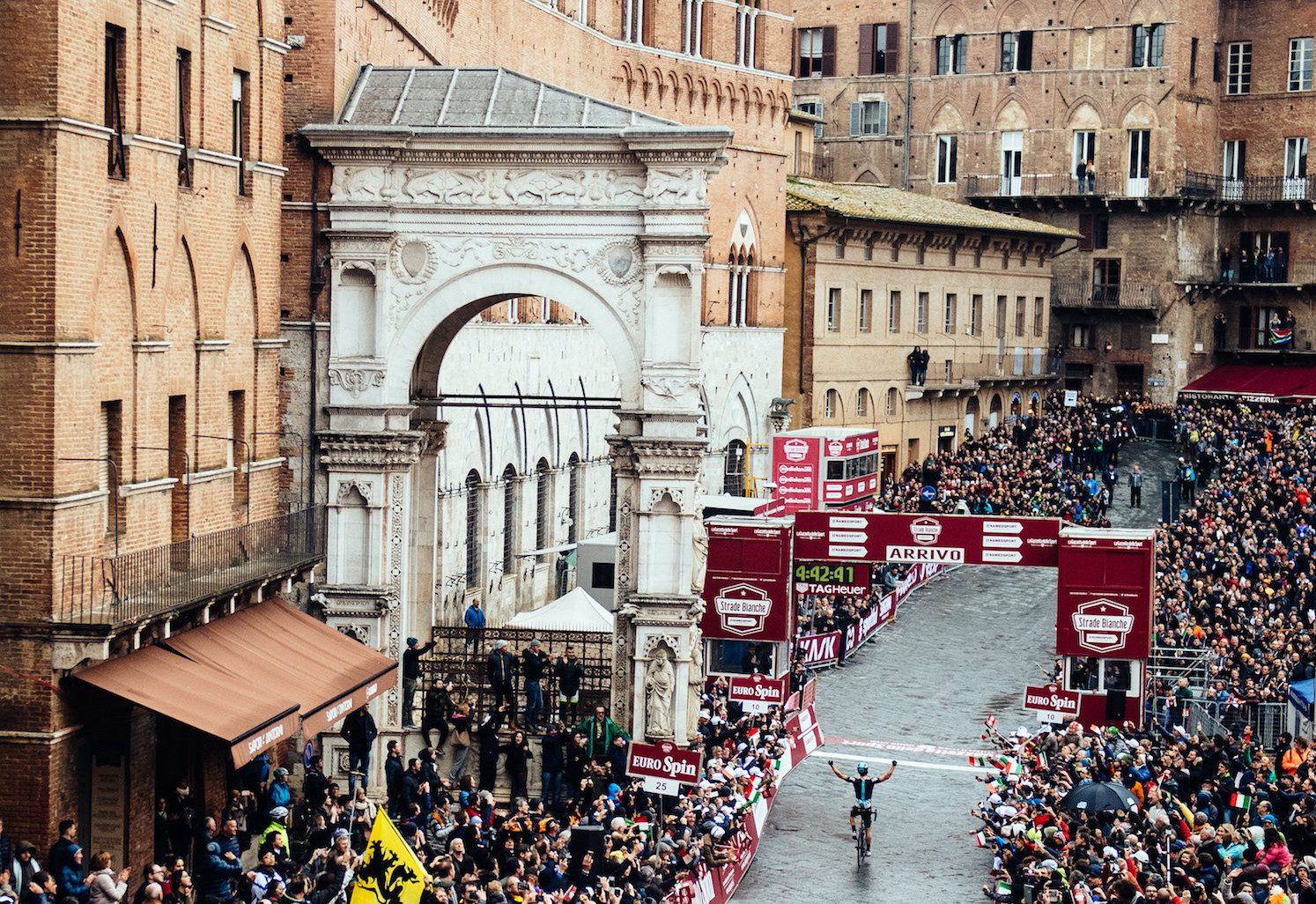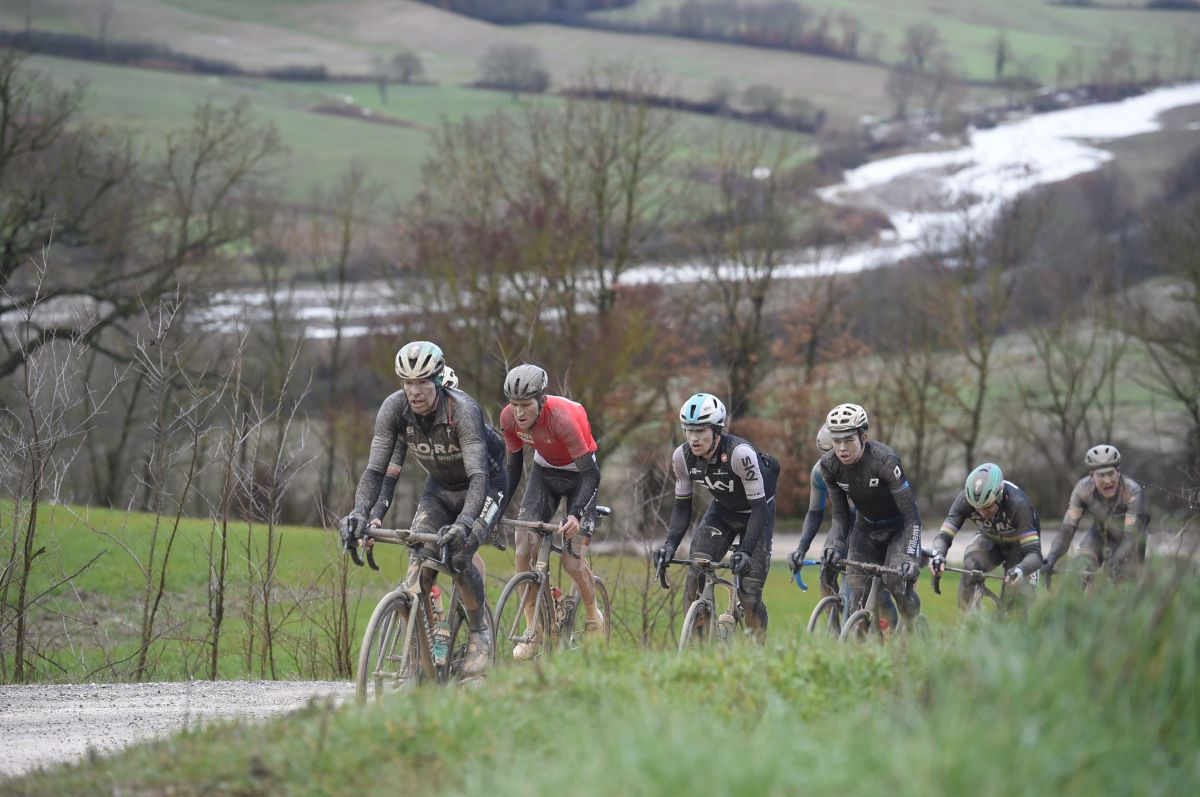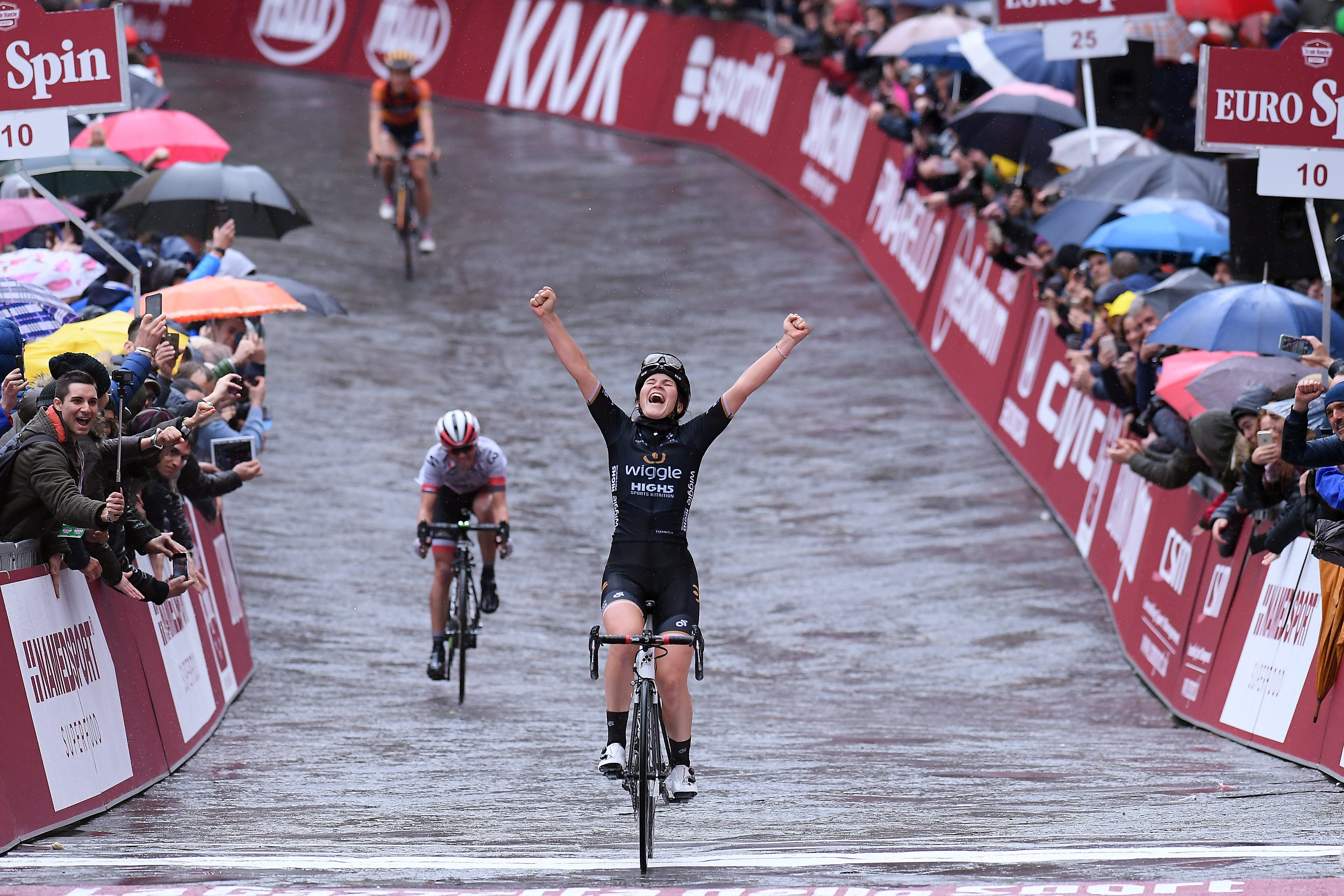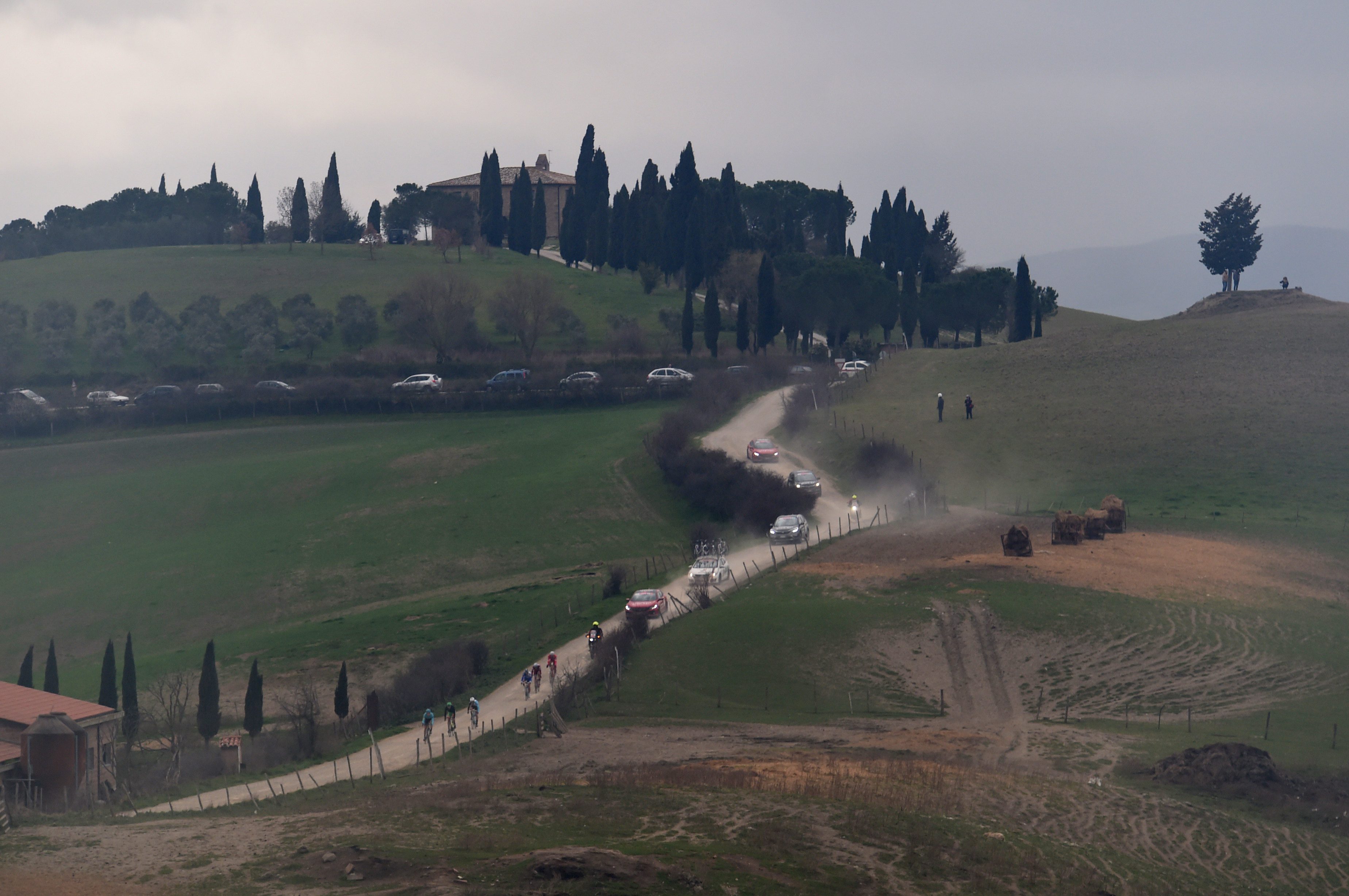Is Strade Bianche deserving of the moniker of cycling’s sixth Monument?
Is an incredible course on beautiful Italian roads with Renaissance architecture as the backdrop of an iconic finish enough to make Tuscany's spring classic one of cycling's most revered one-day races?

What Strade Bianche lacks in history, it makes up in spectacle and substance. The race is the newest sweetheart of cycling fans coming after the opening cobbled classics weekend but before the big rendezvous at Flanders, Roubaix and Liège later in the spring. The race has it all. Challenging undulating terrain, scenic vistas, iconic sections of road and an unpredictable race rhythm that ratchets up the excitement until a crescendo when the race winner cross the line in the Piazza del Campo.Strade Bianche consistently attracts an assemble of contenders from the pelotons top classics stars to puncheurs and even Grand Tour contenders. The list of winners includes the likes of Fabian Cancellara, Philippe Gilbert, Zdenek Stybar and Michal Kwiatkowski. The likes of Alejandro Valverde, Romain Bardet, Peter Sagan and Greg Van Avermaet have all stood on the podium in Siena. While there remain more prestigious races to win on the calendar, the race continues to grow in stature.
The excellent course has delivered exciting racing on par and often exceeding what other prestigious events boast. It has a magical flavour that is just as exciting to watch as anything else the season delivers. With a vintage edition in 2018 when Tiesj Benoot and Anna van der Breggen won on an incredibly wet day in Tuscany, the race’s profile only continues to grow.
So is Strade Bianche befitting of the moniker of cycling’s sixth Monument or is it just the southernmost northern classic on the WorldTour calendar.

Knocks against Strade Bianche
At only 184-km long, Strade Bianche lacks some of the gruelling distances that defines cycling’s historic five Monuments. Of all cycling’s Monuments, Milan-San Remo is consistently the longest stretching out to almost 300-km. De Ronde Van Vlaanderen, Paris-Roubaix and Liège-Bastogne-Liège consistently hover around 260-km while Il Lombardia ticks out at around 240-km. Strade Bianche may have an amazing course that delivers more exciting racing but part of what makes Monuments special is their length. Only a select few riders can win a bike race after over 250-km of racing.
The other feature that Strade Bianche lacks it lacks is the lengthy history of the other Monuments of cycling. Ronde is the youngest celebrating its 103rd edition in 2019. Paris-Roubaix has it’s 117th edition this season while Liège-Bastogne-Liège is 105 and Il Lombardia is 113. The history of cycling is one of the romantic features of the sport. If you are openminded, Strade Bianche’s history dates back to 1997 when L’Eroica was launched using many of the race roads that feature in the elite race today. That was a non-competitive mass participation event on bikes using technology from the 1980s. Somewhat old but maybe not old for cycling purists.
A classic reputation
What Strade Bianche has going for it are the white gravel roads of Tuscany which have become as iconic setting for a bike race as the bergs of Flanders or the cobbles of Northern France. The organizers have the incredible setting of the Chianti region of Italy and the sterrati sections are perfectly balanced into the route along with plenty of paved roads that are an expectation in any modern road race. The regions picturesque Renaissance architecture doesn’t hurt either.
The race around the Crete Senesi, to the south of Siena with its rolling hills and woods interlaced with the white roads, is very demanding. Team tactics play less of a role in the finale of Strade Bianche than many other races because it’s simply too demanding for anyone else expect the leaders. This produces classic Monument style racing whether the strongest on the day go head to head.
Strade Bianche has a unique character, just like each of the other storied Monuments, with an iconic finish and style of racing that makes it truly unique to the professional race calendar. Gravel roads are also novel for the Monuments. MSR, Liège and Lombardia all take place on their smooth tarmac while Flanders and Paris-Roubaix are distinguished by their cobbled sections.
The sixth Monument?
If you are a purist you likely don’t think Strade Bianche is ready to be considered one of cycling’s Monuments because it lacks two key characters of the other five races that fall into the top echelon of pro men’s bike racing. However, it’s compelling course, beautiful setting and unique flavour give it perhaps a stronger case than any other one-day race in proffesional WorldTour racing to be considered the uncrowned sixth Monument of cycling.


